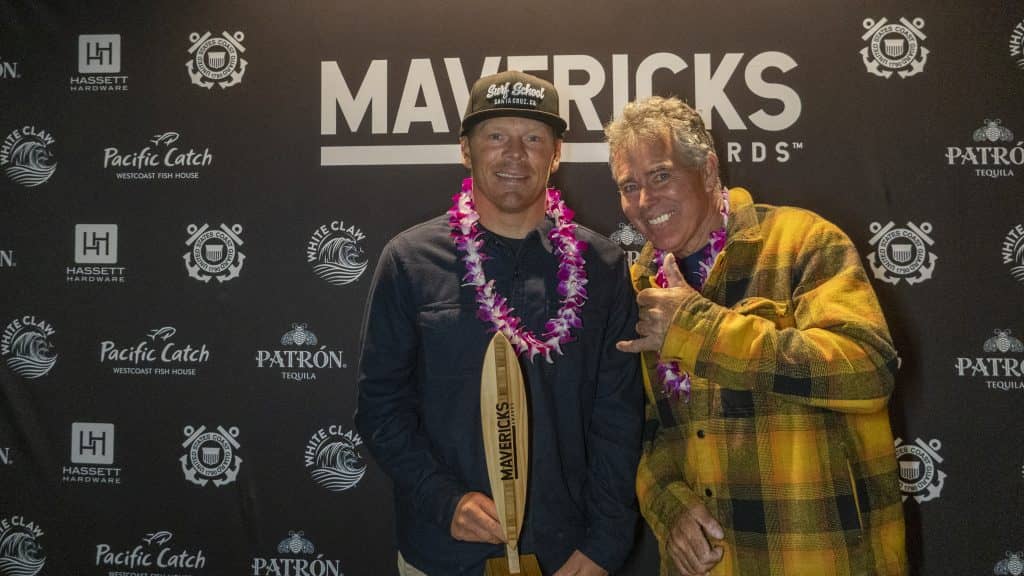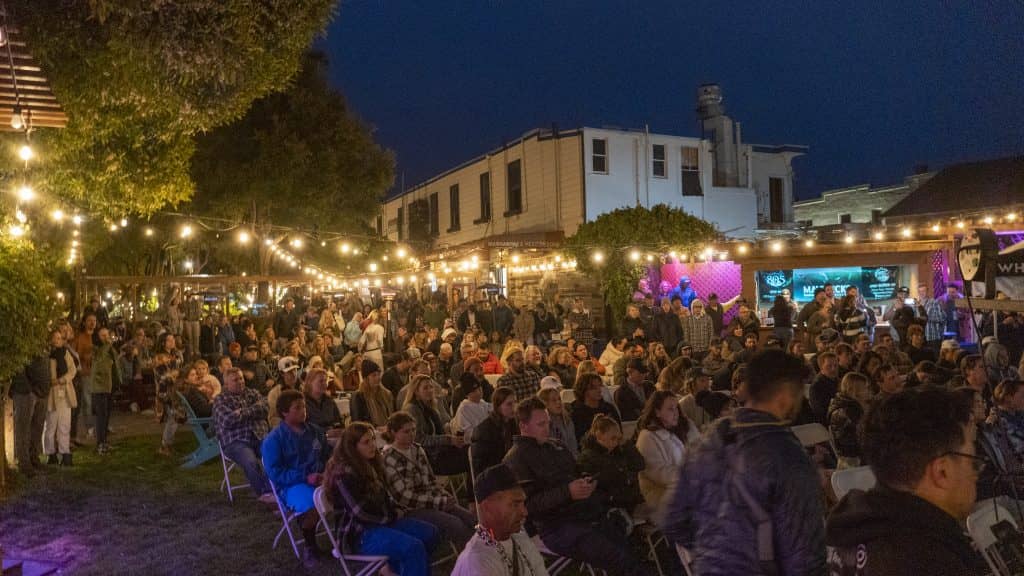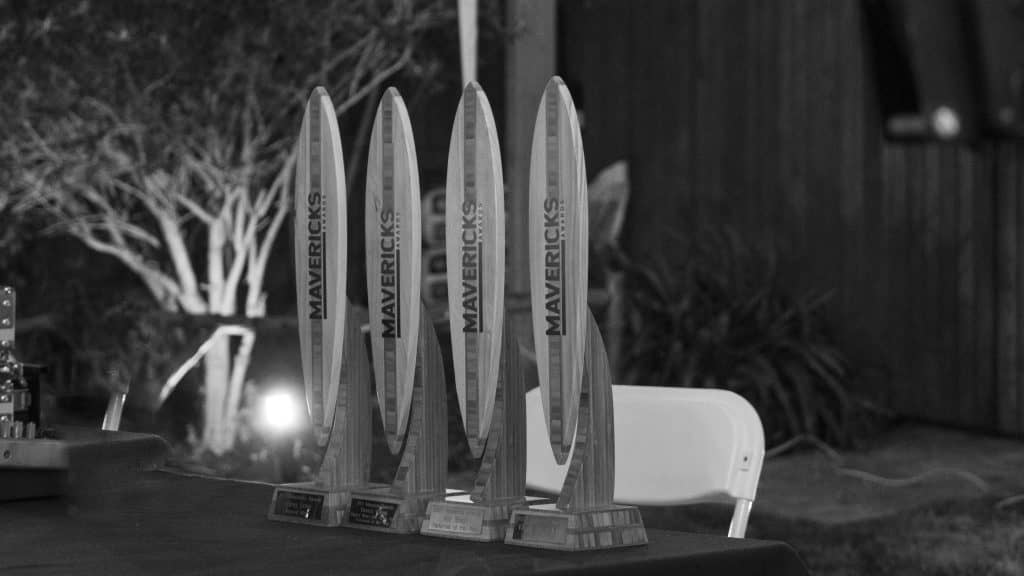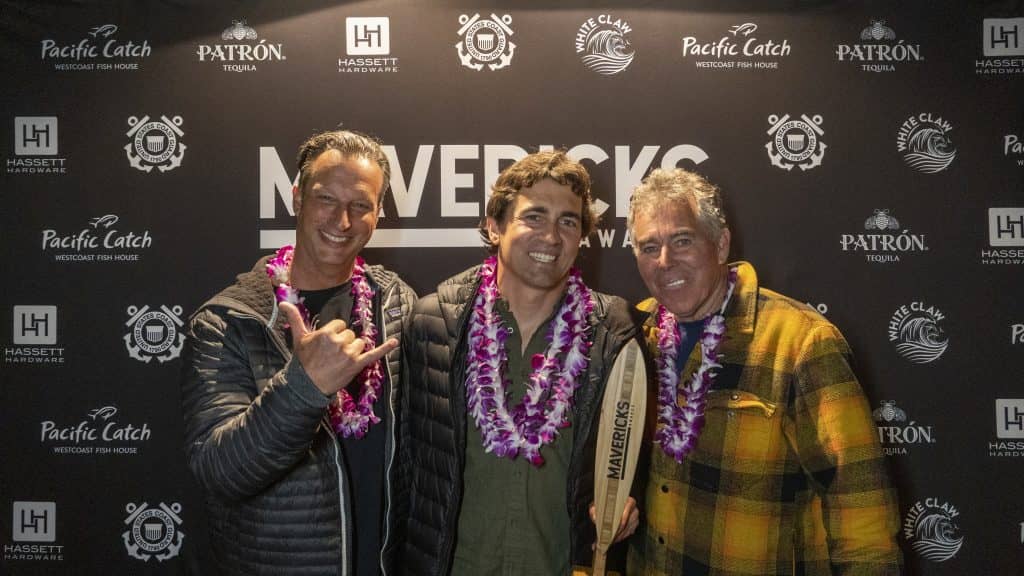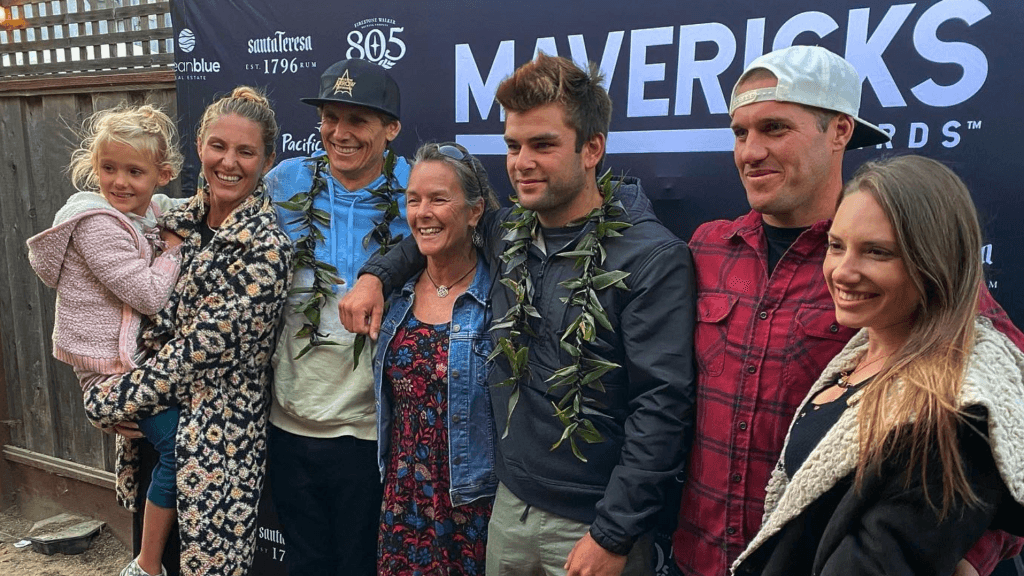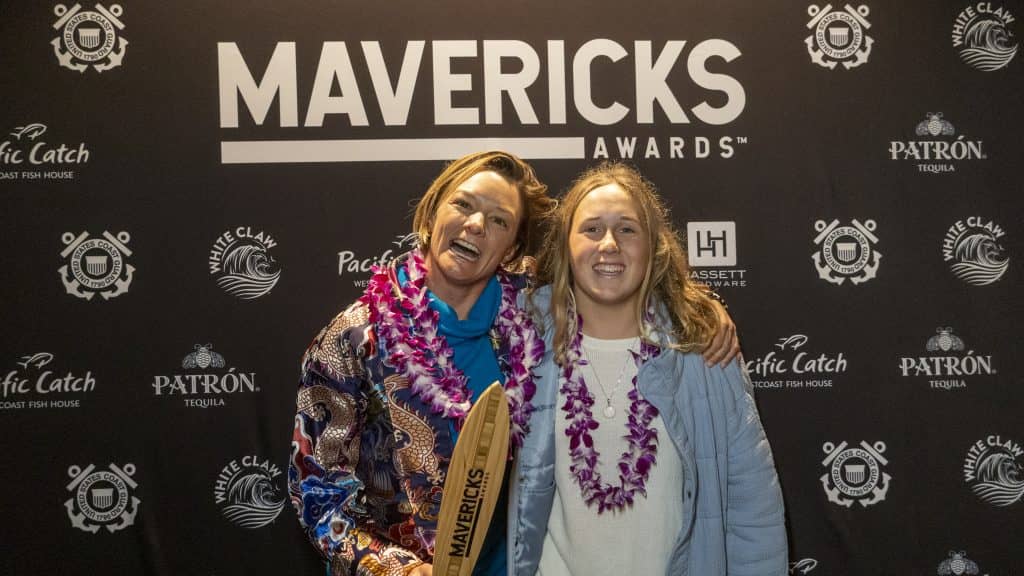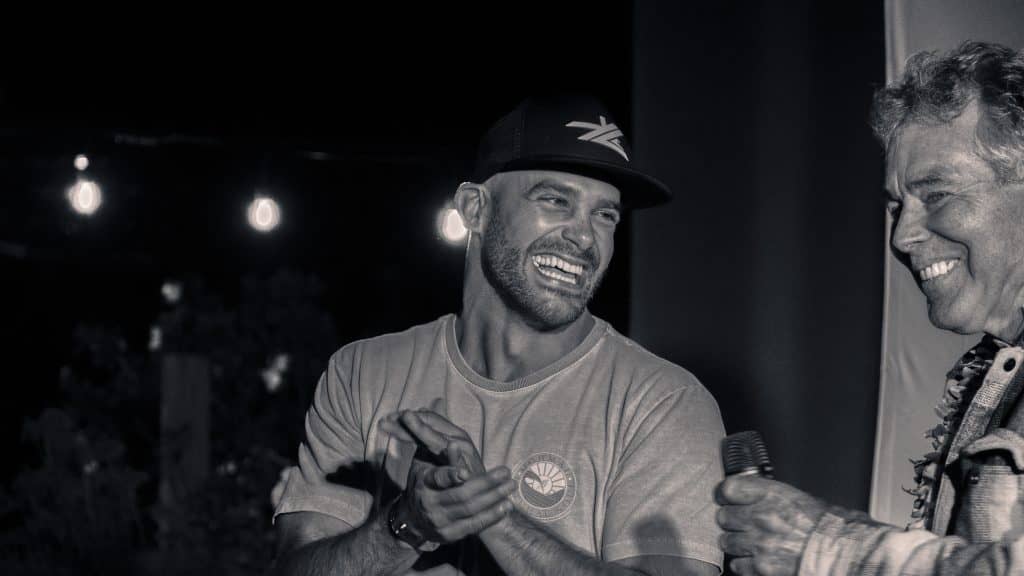History of Mavericks
It's a culmination of your life of surfing when you turn and paddle in at Mavericks...
Jeff Clark
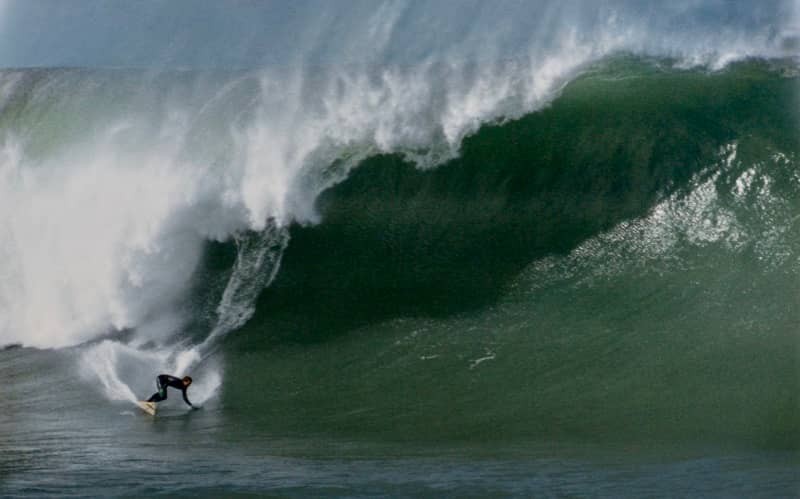
Mavericks is that rarest of waves: not just a perfect wave and not just a giant wave, but a perfect, giant wave
It’s always been there, and always “taken care of itself” (something surfers say about Mavericks, that’s it’s going to do what it does, continue to bring big swells in), but how did it become the big wave spot it is now?
1963-1968
Alex Matienzo, Jim Thompson and Dick Knottmeyer surfed off Pillar Point, which was the only spot protected from northwest wind. They surfed inside the rocks about 100 yards off the beach on mellow long board waves that rolled onto the shore. They named the spot after Matienzo’s roommate’s German Shepherd, Maverick, who would swim out to them each time they went out. The crew would eventually take him back to the beach and tie him up on the fender of their car, at a time when cars could drive out to the point, to keep him out of the water
1975-1989
- 1975: Jeff Clark makes his first solo session at Mavericks; he was 17 years old and a senior at Half Moon Bay High School
- 1985: Jeff Clark talked a few friends, Jeff Kayes, Jim Dale, Jerry Hogan, Keith Delari, Heather Brown Dent, Mark Harrington and John Dale, to surf Mavericks with him. Using surfboards made for smaller waves, it was too hard to catch the huge waves at Mavericks
- 1986: After years of creating surfboards and long-curve windsurfing race boards, Jeff Clark took his shaping skills to the next level and started building big wave guns specifically for Mavericks
1990-1994
- 1990: The first group of big wave surfers came to Mavericks, and set the foundation for decades to come. Everyone who was or wanted to be a big wave rider came to Mavericks: the Santa Cruz contingent (Tom Powers, Richard Schmidt, Dave Schmidt, Vince Collier, Bud Miller, Vince Broglio, Nacho Lopez, Shawn Barron, Marcel Soros, Rick “Frosty” Hesson, and Anthony Ruffo); the Ocean Beach crew (Dr. Mark Renneker, John Raymond and Grant Washburn); the guys from Pacifica (Jim Kibblewhite, Shawn Rhodes, Matt Ambrose, Greg Savin, Brent Heckerman, and Rod Walsh); plus some local Half Moon Bay boys (Jim Tjogas, Darren Bingham, Alan Nelson, Tony Canadas, Mike Kimsey and Ion Banner)
- 1994: 16-year-old Jay Moriarity surfed Mavericks. Jeff Clark watched his first session and noticed he had great instincts and skill. The week of December 24th brought a massive swell, and Jay paddled right into the bowl attempting a bomb of a wave. The bottom dropped out and it became the most famous wipeout ever at Mavericks. The iron cross photo made the cover of Surfer Magazine and the New York Times. His life was later depicted in the Hollywood film Chasing Mavericks
1994-2010
- 1994: Mark Foo, Ken Bradshaw and Brock Little came from Hawaii to surf Mavericks while Mike Parsons and Evan Slater traveled from Southern California. This amazing convergence of big wave surfers ended most tragically: Mark Foo had drowned while surfing at Mavericks. Shaken by this devastating loss, Jeff Clark gathered a few friends started the Mavericks Water Patrol
- 1998: The inaugural Men Who Ride Mountains contest went off at Mavericks in 15-foot surf after a morning of fog. The waves weren’t as big as hoped for, but the sets were intense
- 1999: Female surfer Sarah Gerhardt breaks the gender barrier and becomes the first woman to surf Mavericks, earning her a spot on the alternates list for the next year’s contest at Mavericks
- 2004: After a 4 year hiatus, the Mavericks Surf Contest was finally held again
- 2010: The 7th Mavericks Surf Contest saw waves push up on shore, knocking people and viewing platforms down, causing mass injuries. This was the last event to allow public viewing from the beach
2011-2023
- 2012: Chasing Mavericks is released in theaters, spurring a huge interest in Mavericks and reinvigorating life into the competition
- 2013: The newly formed Mavericks Invitational takes please, starting the new series of competition for the next 3 years
- 2017: The World Surf League buys the rights to conduct a contest at Mavericks, but never holds an event for the 3 years that it owns the rights
- 2020: The new Mavericks Surf Awards begins, pivoting away from the “single-day” competitions, which are financially and logistically impossible to run, to a “digital, season-long” competition. This format proves popular with surfers and fans
The Future of Mavericks
Mavericks Surf Awards
As you’ve read, the annual running of a 1-day contest at Mavericks is not sustainable, financially or logistically. To make sure the contest can run every year, it has evolved to become a season-long, digital contest.
The Mavericks Awards is a digital video performance contest where big wave surfers and videographers submit their best surf content each season. There are 3 categories for men and women, with equal prize money for all. Categories include: Biggest Wave, Ride of the Year, and Performer of the Year. 60% of the prize money is paid to the surfers and 40% is paid to the videographers. Winners are announced and celebrated at the Mavericks Awards, held each May in Half Moon Bay.
The season kicks off October 1st each year, and is celebrated with the Mavericks Festival, a 2-day event with music, surfers, highlight videos, food and drinks, and amazing experiences.
The Mavericks Award season runs through April 15th, so surfers have plenty of opportunities to catch a big swell and have their video entered in the contest.
For more info: www.mavericksawards.com
